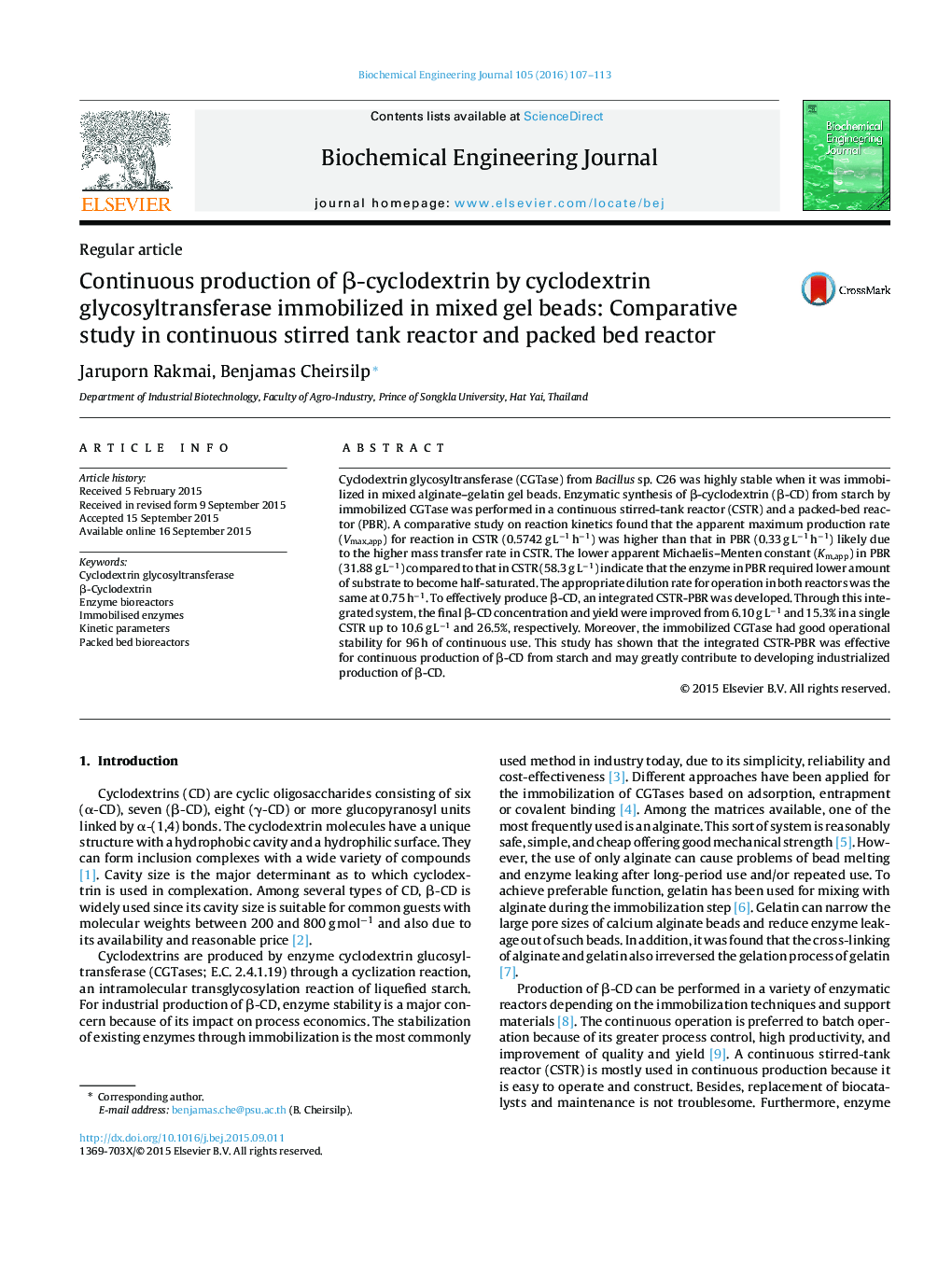| Article ID | Journal | Published Year | Pages | File Type |
|---|---|---|---|---|
| 2811 | Biochemical Engineering Journal | 2016 | 7 Pages |
•Cyclodextrin glycosyltransferase (CGTase) was immobilized in mixed gel beads.•Continuous stirred-tank reactor (CSTR) gave high final β-cyclodextrin concentration.•CSTR was integrated with packed-bed reactor (PBR) to improve conversion yield.•An integrated CSTR-PBR had good operational stability for 96 h of continuous use.
Cyclodextrin glycosyltransferase (CGTase) from Bacillus sp. C26 was highly stable when it was immobilized in mixed alginate–gelatin gel beads. Enzymatic synthesis of β-cyclodextrin (β-CD) from starch by immobilized CGTase was performed in a continuous stirred-tank reactor (CSTR) and a packed-bed reactor (PBR). A comparative study on reaction kinetics found that the apparent maximum production rate (Vmax,app) for reaction in CSTR (0.5742 g L−1 h−1) was higher than that in PBR (0.33 g L−1 h−1) likely due to the higher mass transfer rate in CSTR. The lower apparent Michaelis–Menten constant (Km,app) in PBR (31.88 g L−1) compared to that in CSTR (58.3 g L−1) indicate that the enzyme in PBR required lower amount of substrate to become half-saturated. The appropriate dilution rate for operation in both reactors was the same at 0.75 h−1. To effectively produce β-CD, an integrated CSTR-PBR was developed. Through this integrated system, the final β-CD concentration and yield were improved from 6.10 g L−1 and 15.3% in a single CSTR up to 10.6 g L−1 and 26.5%, respectively. Moreover, the immobilized CGTase had good operational stability for 96 h of continuous use. This study has shown that the integrated CSTR-PBR was effective for continuous production of β-CD from starch and may greatly contribute to developing industrialized production of β-CD.
